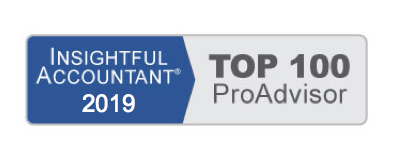Why Set a Closing Date in QuickBooks Enterprise, Premier or Pro?
It is the time of year where you have provided your accountant with you financial data to prepare the tax return. To prevent changes to the data being, set a Closing Date and optional Closing Date Password.
You must set a closing date and optionally a password if you want to track changes made to transactions dated on or before the closing date. When a closing date is not set, QuickBooks does not track the changes.
Setting a QuickBooks Closing Date
To set the closing date and optionally assign a password (different from the Admin password), follow these steps after first logging into the data file as the Admin or External Accountant User:
- Click Company, Set Closing Date to open the Accounting, Company Preferences dialog.
- Click the Set Date/Password button. The Set Closing Date and Password dialog displays.
- Enter a closing date and optional password. You might want to discuss this date with your accountant first.
- Click OK to accept the closing date and optional password.
Setting a closing date was only step one. Next, you must set user-specific privileges for users who need access to adding or modifying a transaction dated on or before the closing date.
Setting User-Specific Security
To be certain that the closing date control is managed properly, review all users for their specific rights to change transactions before a closing date. To view the following menu, you need to log into the file as the Admin user:
- Click Company, Set Up Users and Passwords and select the option to Set Up Users. The User List dialog opens.
- To view a user’s existing security privileges from the User List dialog, select the user with your cursor and click the View User button. You can view in summary form the security settings for that user.
- Any user who should not have rights to changing closed period transactions should have an “N” placed in the last setting, Changing Closed Transactions.
- If after reviewing a user’s existing security privileges you need to edit the setting referenced earlier, click Leave to close the View User Access dialog.
- QuickBooks returns you to the User List dialog. Select the user name and click the Edit User button.
- On the Change User Password and Access dialog, optionally modify the user name or password. Click Next to continue.
- The User Access dialog for the specific user displays. Select Selected Areas and click Next to continue through each of the security selections until you reach the selection on Page 9 of 9.
Beginning with QuickBooks 2009, there is a new user type that can be assigned to the company accountant, called External Accountant. This new user type has all the privileges of the Admin user, except this user cannot view sensitive customer credit card numbers.
If after setting the user security levels in QuickBooks you want to have more levels of restriction, such as allowing users to access certain bank accounts but not others, you might want to consider the QuickBooks Enterprise product that offers more sophisticated security levels for limited the ability of a user to add, modify, or view specific lists or modules within QuickBooks.
You set a closing date and optional closing date password and define which users are allowed to add or modify transactions dated on or before the closing date; QuickBooks is now gathering information for the Closing Date Exception report.
Creating the Closing Date Exception Report
To have QuickBooks track information for the Closing Date Exception report, you first had to set a closing date and optionally set specific users’ access to adding or modifying transactions on or before this date.
If you have compared your own or your clients’ data to prior year financials, or tax returns and the ending balances for the “closed” period have changed (and you set a closing date for the file), you should view the Closing Date Exception report to see exactly who made the change and what specific transactions were added or modified.
Exceptions, additions, and changes are not tracked during the time period that a closing date was not set.
To create the Closing Date Exception report, click Reports, Accountant & Taxes and choose the Closing Date Exception Report.
This report enables you to identify changes that were made to transactions dated on or before the closing date. For modified transactions, the report details both the latest version of a transaction and the prior version (as of the closing date). With privileges to change closed period transactions, you can then re-create the original transaction or change the date of added transactions so that you can once again agree with the ending balance from the previously closed period.
Excerpt from the QuickBooks 2010 Solutions Guide, get your copy now!












